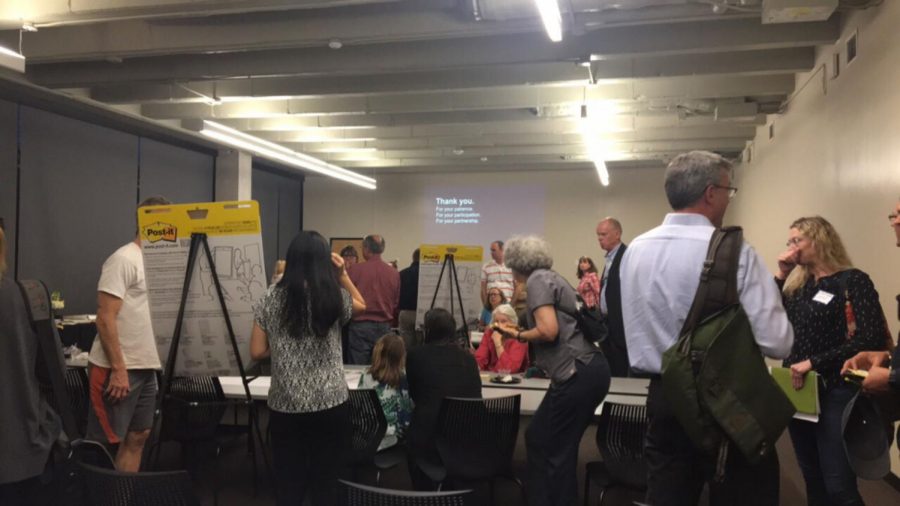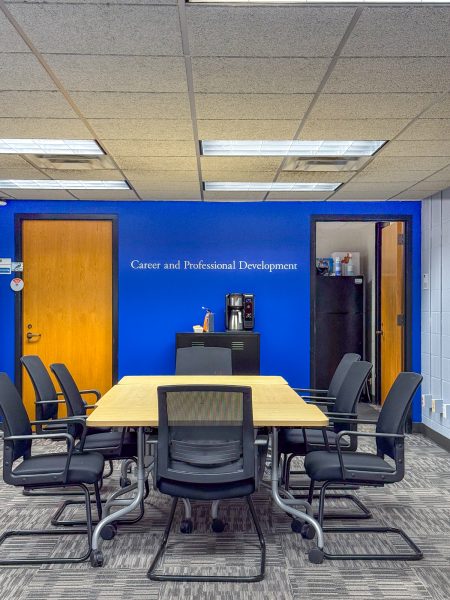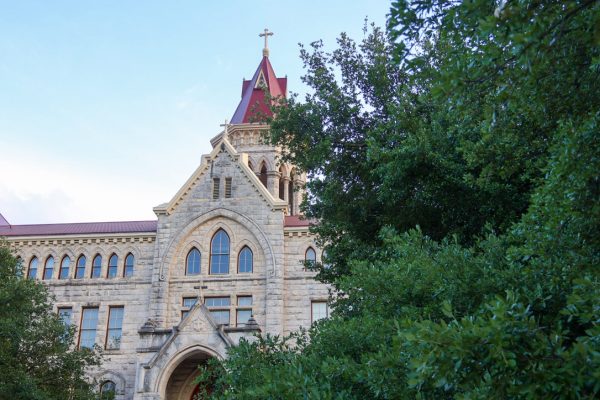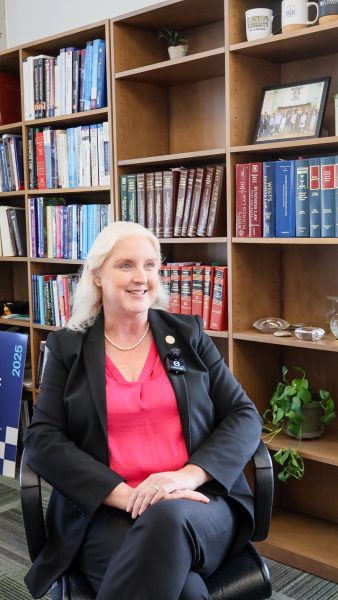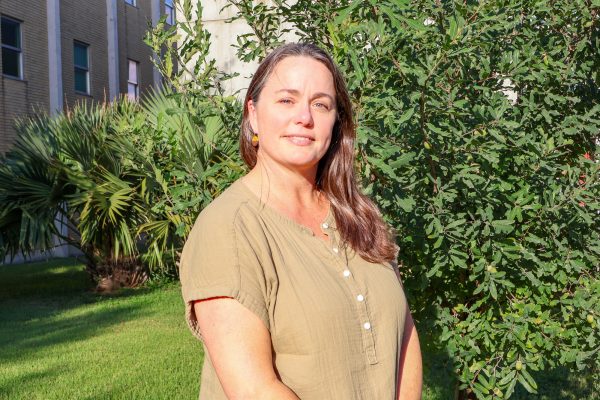Neighbors vent concerns about impact of future university development
Sherwood Oaks neighbors and others in the surrounding St. Edward’s area gathered for a meeting Feb. 22.
As master plan projects come to fruition, the neighbors surrounding St. Edward’s are continuing to express their uneasiness with the new operations building and students’ parking in the area.
Sasaki Associates, master plan coordinators and university officials, led a meeting at the library Feb. 22 to address their concerns with conversations centered on streetscape, the master plan and parking.
Moving forward, the university plans to enforce changes that will acknowledge neighbors’ grievances. To do so, the university plans to follow up on speed bumps that should have been installed on St. Edward’s drive in January, ticketing illegal parking and speeding and possibly adding a sidewalk.
The neighbors expressed disdain about deliveries that will be made to the operations building once a week by an 18-wheel truck, requiring it to pass through St. Edward’s drive to its destination near the fine arts building and soccer field.
Joe Farley of the Sherwood Oaks neighborhood stands in the street and motions for his wife while she backs her car out of their home since students’ parking interferes with visibility.
“The concern is that St. Edward’s drive will become the back alley for St. Ed’s,” said Farley. “The operations building first, then some other stuff that wouldn’t be too desirable.”
The operations building is set to open in April with a $4 million budget, and will house the university police department, the post office and other facilities.
The possibility of more than one delivery a week to the building in the coming years has not been ruled out.
Illegal parking is also an issue that the neighbors are looking to UPD and APD to handle by giving tickets for parking too close to intersections or fire hydrants. Students have attributed overcrowding and the price of a permit as a reason that students park off campus, as the cost for a year of parking is $250.
University officials noted that they’re aiming for a “park once” approach in which drivers don’t feel an urge to move their cars. The presenter also said, “we actually have enough parking. The problem is, we don’t have the parking where we need the parking.”
Ideas for more flexible student parking were provided, such as a pay as you go system or cheaper options.
“The vast majority of students that are driving do buy permits. But there are a number of them that aren’t,” said Scott Burnotes, assistant vice president of campus safety.
Neighbors were instructed to write questions they have on notecards while university officials gave a presentation at the start of the meeting, though some wished to speak during the presentation. Attendees also desired a group question and answer format as opposed to discussion stations.
Updates on master plan projects will be discussed during the next neighborhood meeting on March 23.


